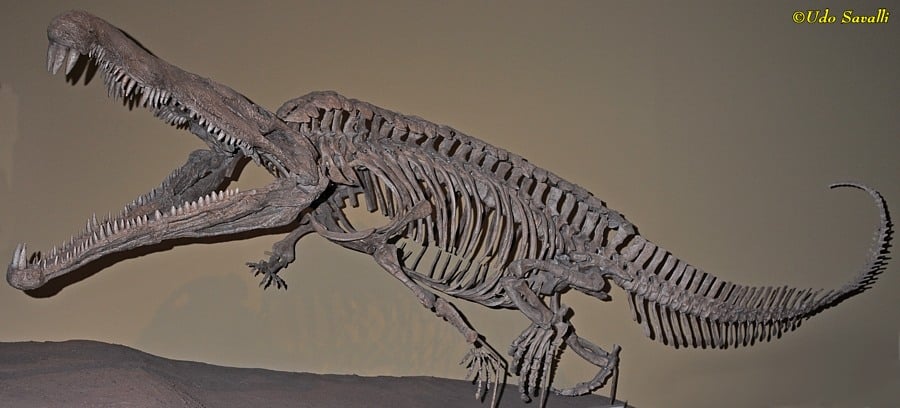Crocodiles appear to be from another era when reptiles ruled. However, appearances can be deceiving. Crocodiles today are not Jurassic-era holdovers but rather one expression of a vast, diverse family that has existed for over 235 million years. More importantly, crocodiles are still evolving at a faster rate than they have in the past. But did you know that both crocodiles and alligators are related to Archosaurs?
Crocodiles and alligators are survivors of an ancient evolutionary division of Archosaurs that dominated the planet in the late Triassic before being supplanted by Dinosaurs due to an extinction event.
The Crocodile and Its Uncle
A well-preserved ancestor of crocodiles has revealed how the reptiles evolved into the feared aquatic predators of today.
The Amphicotylus milesi, known as the uncle of modern crocodilians, had a similar skull to its later relatives, which allowed it to seal its throat. This would have allowed the predator to pursue prey in the water without fear of drowning.
Amphicotylus milesi is a fantastic specimen, and seeing it as a mounted specimen is unbelievable as it almost looks like a modern crocodile. It was a member of the goniopholididae, which have a similar semi-aquatic lifestyle and a generally similar skull shape and skeleton to modern crocodiles. They’re one of the earliest branching lineages in a group called neosuchia, which includes all modern crocodilians and their closest ancestors.
Doctor Stephen Spiekman, Researcher Gunma Museum of Natural History
(Source: Natural History Museum UK)
The Crocodile’s Ancestry
Crocodiles evolved around 200 million years ago during the Late Triassic and Early Jurassic periods. These ancestors had a shorter snout than most living crocodilians. They did, however, have a secondary bony palate that separated the passage between their internal and external nostrils, as did all of their descendants.
Crocodiles are known as living fossils, so you might have the idea that they have looked the same for millions of years. Nowadays, they are all semi-aquatic and predators of fish and other prey, but they have a very interesting evolutionary history. They started out living on land where they were generally smaller and a lot more active. Some like Sarcosuchus were enormous predators, while others were herbivores and omnivores.
Doctor Stephen Spiekman, Researcher Gunma Museum of Natural History
As carnivorous crocodyliforms became the dominant form, these diverse species and their descendants became extinct.
One group of these reptiles that evolved during the Jurassic Period was the goniopholididae. They shared many characteristics with modern crocodilians, including a similar body plan, which suggests a semi-aquatic lifestyle.
Their semi-aquatic lifestyle is aided further by the presence of the gular valve, which uses a flap to seal off the mouth from the throat. This allows the reptile to breathe through its nostrils even though the rest of its head is submerged.
We as humans have a secondary palate, but crocodiles are rare among reptiles in having one. It keeps the nasal cavity and mouth separate, with an opening at the back of the throat instead. However, crocodiles have the gular valve behind the mouth which can separate it from the nose, allowing them to breathe even if their mouth is underwater. The valve is a fundamental thing to the way crocodiles live and hunt nowadays, allowing them to sit in the water with their mouth open.
Doctor Stephen Spiekman, Researcher Gunma Museum of Natural History
On the other hand, this flap contains cartilaginous structures that do not fossilize well, making it difficult to determine when the gular valve first evolved. Amphicotylus miles, one of the best-preserved goniopholididae specimens, has one of these cartilaginous elements preserved. (Source: Natural History Museum UK)
Image from Savalli.Us
